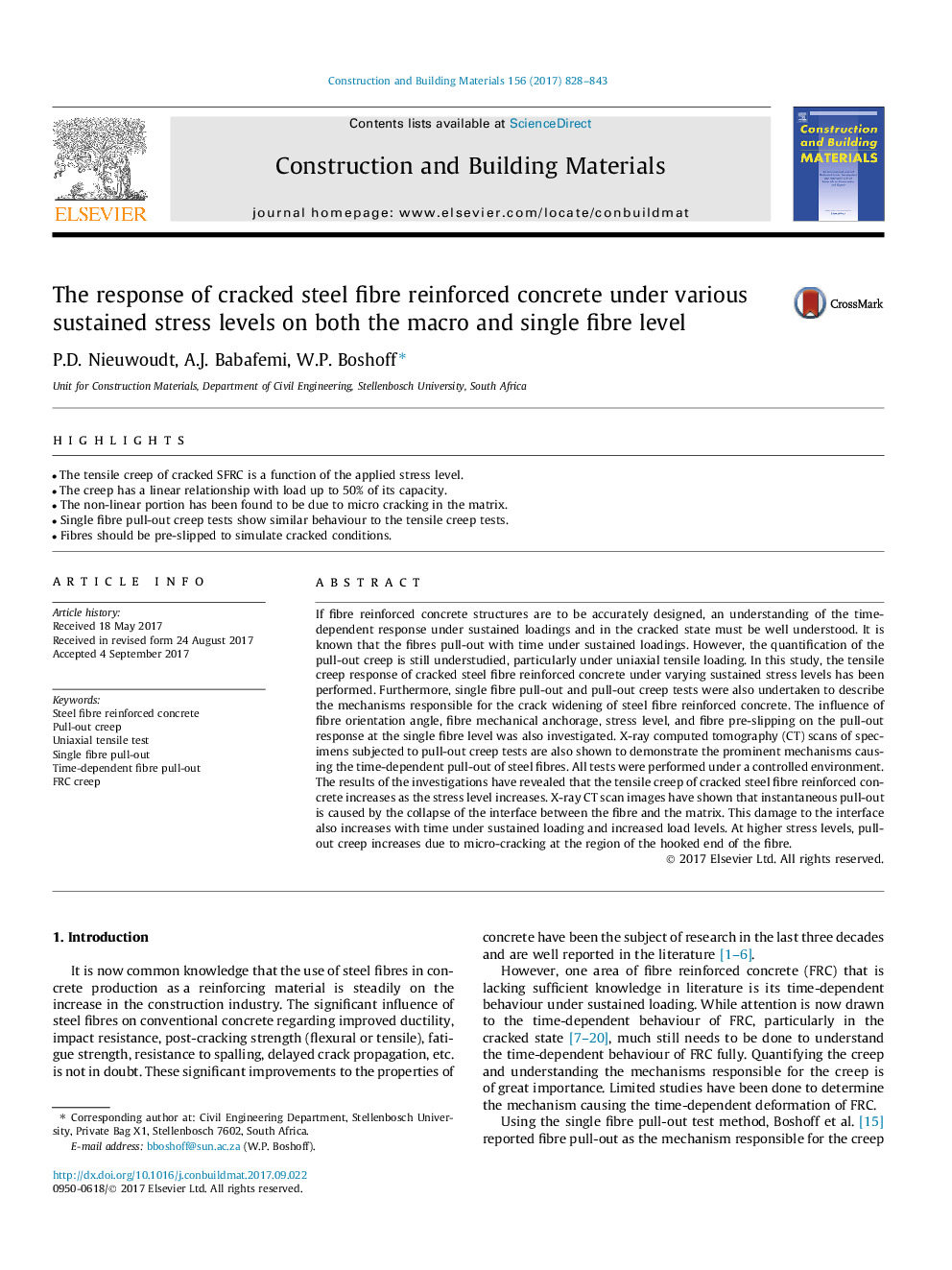| Article ID | Journal | Published Year | Pages | File Type |
|---|---|---|---|---|
| 4912712 | Construction and Building Materials | 2017 | 16 Pages |
Abstract
If fibre reinforced concrete structures are to be accurately designed, an understanding of the time-dependent response under sustained loadings and in the cracked state must be well understood. It is known that the fibres pull-out with time under sustained loadings. However, the quantification of the pull-out creep is still understudied, particularly under uniaxial tensile loading. In this study, the tensile creep response of cracked steel fibre reinforced concrete under varying sustained stress levels has been performed. Furthermore, single fibre pull-out and pull-out creep tests were also undertaken to describe the mechanisms responsible for the crack widening of steel fibre reinforced concrete. The influence of fibre orientation angle, fibre mechanical anchorage, stress level, and fibre pre-slipping on the pull-out response at the single fibre level was also investigated. X-ray computed tomography (CT) scans of specimens subjected to pull-out creep tests are also shown to demonstrate the prominent mechanisms causing the time-dependent pull-out of steel fibres. All tests were performed under a controlled environment. The results of the investigations have revealed that the tensile creep of cracked steel fibre reinforced concrete increases as the stress level increases. X-ray CT scan images have shown that instantaneous pull-out is caused by the collapse of the interface between the fibre and the matrix. This damage to the interface also increases with time under sustained loading and increased load levels. At higher stress levels, pull-out creep increases due to micro-cracking at the region of the hooked end of the fibre.
Related Topics
Physical Sciences and Engineering
Engineering
Civil and Structural Engineering
Authors
P.D. Nieuwoudt, A.J. Babafemi, W.P. Boshoff,
